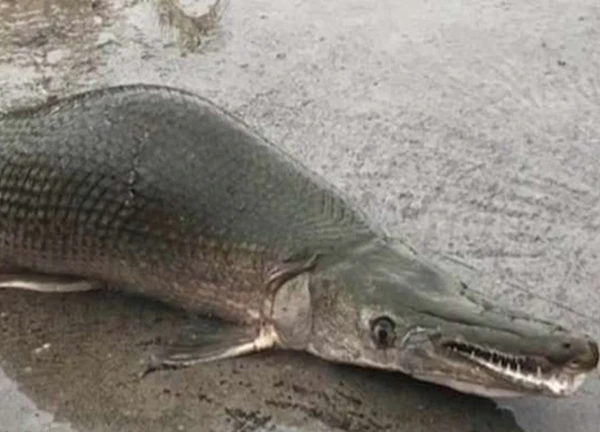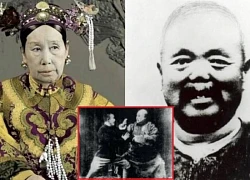Garlic is the antidote to all kinds of evil spirits, is its power as rumored?

6 | 1 Discuss | Share
If Andrea Sachs in The Devil Wears Prada once showed off her confidence in Chanel boots, today, a new, bolder and more unique fashion trend is gradually taking over the catwalk with products made from T. rex dinosaur skin.
This idea is being realized by three pioneering companies VML, The Organoid Company and Lab-Grown Leather Ltd.
Inspired by prehistoric creatures, T. rex skin is the latest step in the evolution of biomaterials. VML, which made headlines for creating “mammoth meatballs†from ancient elephant DNA, is now pushing the boundaries of science by teaming up with genetics and histology experts to develop artificial skin based on collagen extracted from T. rex fossils.
Their ambition was not simply to create an alternative to traditional animal leather, but to build an icon where the ancient past meets the sustainable future of the luxury industry.
The idea of harnessing dinosaur DNA to recreate skin structure has created huge waves in the media, and at the same time opened up an exciting prospect of "reviving" prehistoric materials to serve the modern world.
The process begins by extracting fossilized collagen, a protein that can survive for tens of millions of years thanks to a rare natural preservation mechanism. After decoding its molecular structure, scientists use DNA synthesis technology to program tissue cells, culture them in the laboratory, and let the cells develop into a skin layer with a structure similar to the natural dermis.
Notably, the entire process does not require any scaffolds or supports, a major advance in the field of advanced biomaterials.
T. rex leather is not just an iconic imitation, but a truly advanced biomaterial that surpasses traditional animal skins in both performance and utility. According to VML, this leather possesses impressive natural durability, the ability to self-heal after minor mechanical damage, and a softness that is on par with or even surpasses many high-end leather products currently on the market.
One of the key aspects that sets T. rex leather apart is its ethical and environmental credentials. The entire production process involves no harm to any animals, no deforestation, and absolutely no toxic chemicals commonly found in the leather industry. This is an important step in redefining sustainability standards for the fashion and luxury industry.
On the contrary, the traditional leather industry has long been associated with serious negative impacts on the environment. According to a report by the World Wildlife Fund (WWF), cattle farming, the main raw material for leather production, is directly responsible for about 80% of deforestation in the Amazon region. The result is a loss of biodiversity, increased greenhouse gas emissions, and severe degradation of natural ecosystems.
Meanwhile, alternative products such as "vegan leather" which are considered a more environmentally friendly choice often contain petroleum-based plastic compounds, which in the long run also leave significant environmental consequences.
It is in this current climate of conflict between aesthetic needs and ecological responsibility that T. rex leather has emerged as a superior solution. It is not only a technological advance, but also a declaration of a future of fashion that does not destroy nature, where scientific innovation becomes the bridge between class, ethics and sustainability.
Thomas Mitchell, CEO of The Organoid Company, said the project demonstrates how the combination of genetics and protein engineering can create entirely new materials that are not only aesthetically impressive but also superior in performance.
He emphasized that recreating ancient proteins not only helps to restore the original biological structure, but can also be customized to meet modern industrial standards.
Another notable advantage is its ability to be completely biodegradable. In the context of increasingly serious waste pollution and climate change, high-end and environmentally friendly materials such as T. rex leather become the ideal choice for those looking for sustainability without losing style.
T. rex skin is therefore not only a fashion statement, but also a symbol of technological progress and ecological responsibility.
The first products using this T. rex leather are expected to launch by the end of 2025, starting with luxury accessories such as handbags, wallets and watch straps. In the future, the developers hope to expand to automotive interiors and high-end fashion, areas that require sophistication, durability and innovation.
If successful, this bio-leather could revolutionize not only the fashion industry, but also the way humans approach materials from technology to ethics and aesthetics.
The idea of creating skin from dinosaur collagen may sound like something straight out of science fiction, but in a global search for sustainable, humane solutions, sometimes the answer lies... in prehistory.
Having caused a stir with its "mammoth meatballs", VML once again shows that ancient biology is not just a relic of the past, but may be the key to the future.
Do we really need a dinosaur-skin jacket to make a statement? Probably not. But the fact that humans have been able to recreate a beautiful, luxurious, sustainable, and environmentally friendly material from the DNA of a creature that has been extinct for tens of millions of years is a testament to the incredible creativity and adaptability of humankind.
As the world faces unprecedented environmental and resource crises, looking to the past may be the key to unlocking a greener, more sustainable future that still retains its own unique style.
From a seemingly impossible idea, T. rex skin is becoming a symbol of a new material era where science, fashion and ecological responsibility come together. It not only questions the limits of technology, but also opens up new conversations about how we live, produce and consume in a changing world.
As the line between fantasy and reality becomes increasingly blurred, perhaps what matters most is not what we can create, but what we choose to create, and for what purpose.
Pu Yi 'betrayed' the Forbidden City, revealing the secret of the eunuchs' struggle, more notorious than the movies?  Kim Oanh17:13:44 12/04/2025Once a symbol of supreme power, the Forbidden City with its intricately carved corridors always evokes in people's minds the image of a luxurious, splendid world, where there is only brocade, silk and solemn ceremonies.
Kim Oanh17:13:44 12/04/2025Once a symbol of supreme power, the Forbidden City with its intricately carved corridors always evokes in people's minds the image of a luxurious, splendid world, where there is only brocade, silk and solemn ceremonies.

6 | 1 Discuss | Share

1 | 1 Discuss | Share

1 | 1 Discuss | Share

3 | 0 Discuss | Share

2 | 0 Discuss | Share

2 | 0 Discuss | Share



3 | 0 Discuss | Report